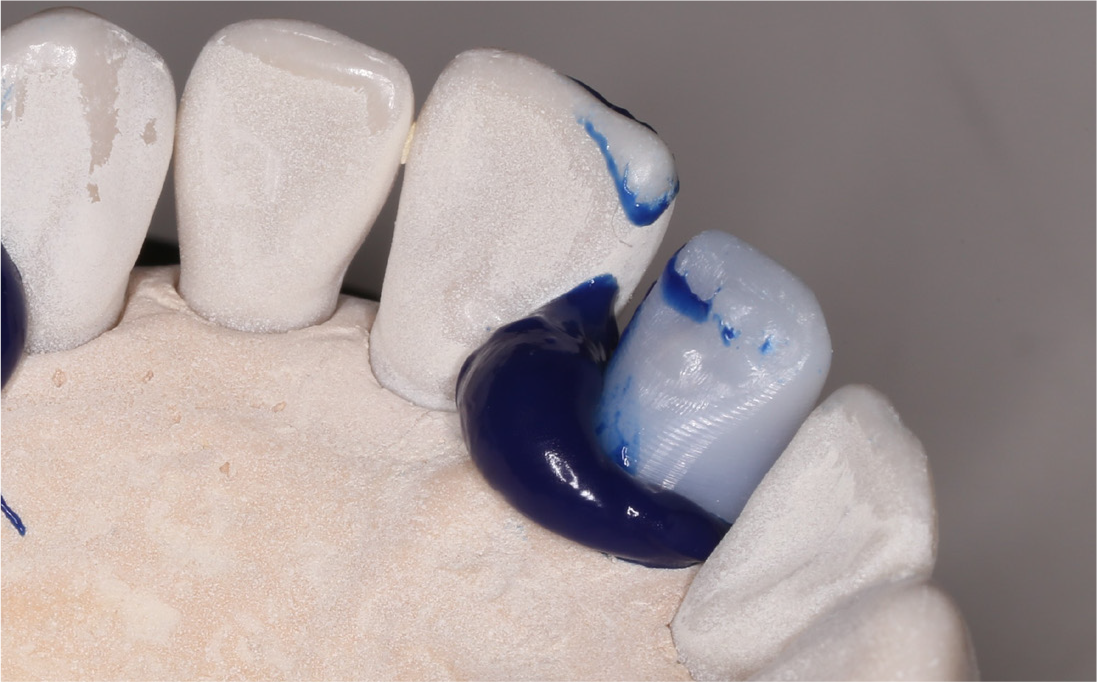Marginal gap of digitally made
dental single crowns

The method may also be used to evaluate the overall adaptation of the final restoration.
Combining this technique with digital scanning increased the number of measuring points, and the validity of the measurements.
No difference in marginal fit was found between crowns made by CAD/CAM techniques from the most used prosthetic materials for single crowns. When averaged, all marginal gaps were in the range 40 – 60 µm.
These values are comparable to the settings recommended by the manufacturer of the materials and manufacturing systems and much less than 120 µm, which has been regarded as the largest clinically acceptable gap.
The tested crowns were made from milled pre-sintered zirconium dioxide, milled hot-isostatic-pressed zirconium dioxide, milled lithium disilicate reinforced glass-ceramic, and cobalt-chromium alloy, which was milled, laser-sintered or cast.
The marginal fit was evaluated by a digitized version of the impression replica technique, namely the dual-scan technique. The method was based on a bench-top scanner used by dental technicians, but can be used also in the clinic if an intra-oral scanner is available. The marginal gap was determined by digitally superimposing scans of the bare master model and of the master model with a silicone layer representing the cement layer.
The impression replica technique has been used for many years, with analogue measurements of the silicone material representing the cement gap. Usually the number of measuring points has been limited. Combining this technique with digital scanning increased the number of measuring points and also the validity of the measurements.

Clinical implications: The method can be used to evaluate fit of singel crowns.
Read more:
Dahl BE, Dahl JE, Rønold HJ.
Digital evaluation of marginal and internal fit of single-crown fixed dental prostheses.
Eur J Oral Sci 2018; 00: 1–6.
Vacant positions as visiting scientists in 2020
The purpose of NIOM´s visiting scientist program is to enhance collaboration on biomaterials research in the Nordic countries. Positions are available during 2020 for periods between 3 and 6 months. Scientists having documented education and/or research experience in the field of biomaterials are welcome to apply. Ph.D. candidates and young scientists are especially invited to apply. See www.niom.no for more information.
Deadline for application: June 20th 2019.
